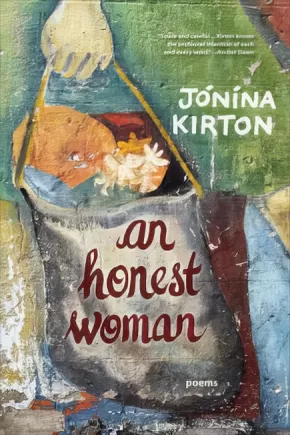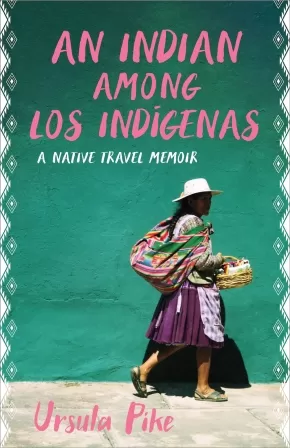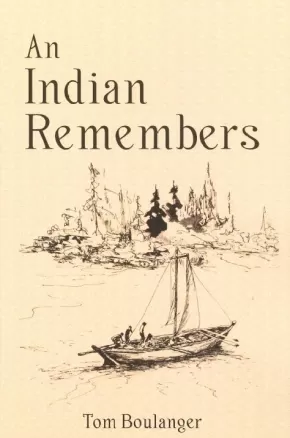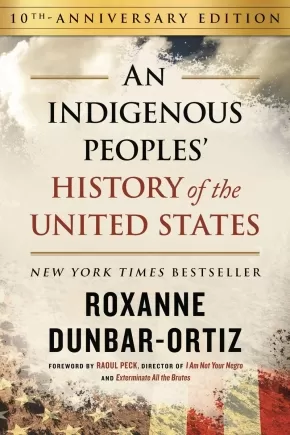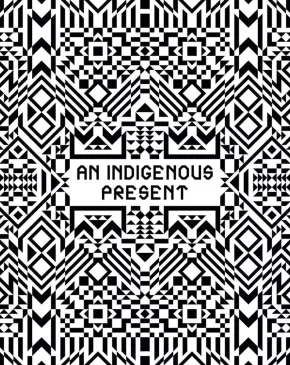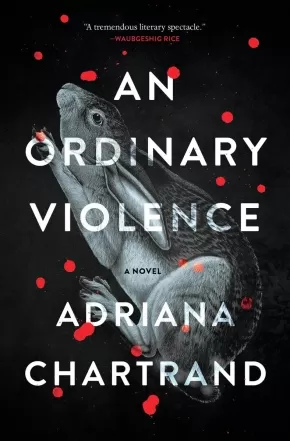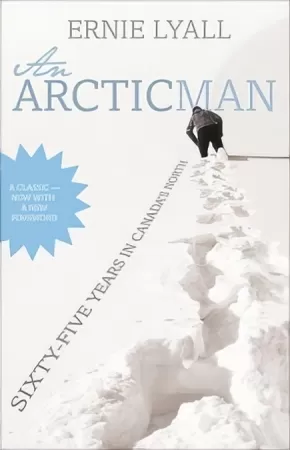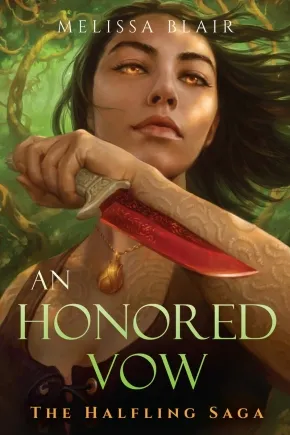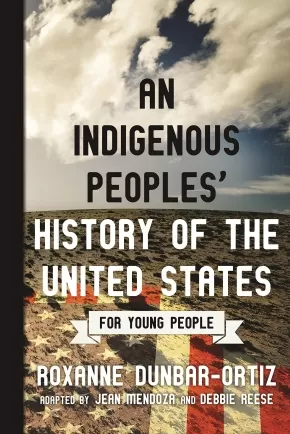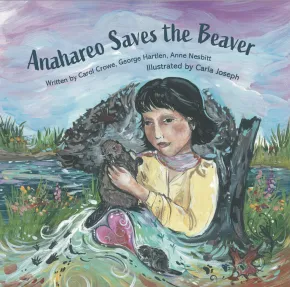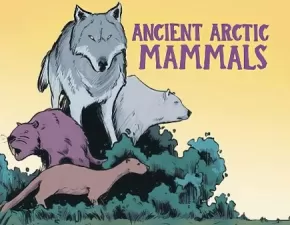
English
Books (7)
An Honest Woman
$16.95
Format:
Paperback
Text Content Territories:
Indigenous Canadian;
ISBN / Barcode: 9781772011449
Synopsis:
Synopsis:
An Honest Woman by Jonina Kirton confronts us with beauty and ugliness in the wholesome riot that is sex, love, and marriage. From the perspective of a mixed-race woman, Kirton engages with Simone de Beauvoir and Donald Trump to unravel the norms of femininity and sexuality that continue to adhere today.
Kirton recalls her own upbringing, during which she was told to find a good husband who would “make an honest woman” out of her. Exploring the lives of many women, including her mother, her contemporaries, and well-known sex-crime stories such as the case of Elisabeth Fritzl, Kirton mines the personal to loosen the grip of patriarchal and colonial impositions.
An Honest Woman explores the many ways the female body is shaped by questions that have been too political to ask: What happens when a woman decides to take her sexuality into her own hands, dismissing cultural norms and the expectations of her parents? How is a young woman’s sexuality influenced when she is perceived as an “exotic” other? Can a woman reconnect with her Indigenous community by choosing Indigenous lovers?
Daring and tender in their honesty and wisdom, these poems challenge the perception of women’s bodies as glamorous and marketable commodities and imagine an embodied female experience that accommodates the role of creativity and a nurturing relationship with the land.
Reviews
“Jonina Kirton is courageously honest about her life experiences as a female of Indigenous and immigrant ancestry. Many poems resonate deeply, as we identify with her personal quest to figure out who she is, and the unacceptable things done to her. Her raw honesty is unsettling and uncomfortable, because it can be our truth too. Her poems depict devaluation and dehumanization, grieving, lessons learned. Her poems offer important insights as to why there are thousands of missing and murdered Indigenous women.” — Senator Lillian E. Dyck
“When writing from the voice of between, writer and reader have no place to hide. Assumptions and camouflage fall away. Murdered, missing, and violated women and girl voices have been silenced. The story lethally repeats. Kirton picks over how she was raised familially and culturally like a crime scene. Too, she affirms, ‘I have been here forever and I will rise again and again.’ Tough, eloquent, revelatory, these poems are the very ones we are desperately in need of.” — Betsy Warland, author of Oscar of Between: A Memoir of Identity and Ideas
“I’m sure people have been looking at me strangely every time I gasp, but I can’t glance away from the page for even a second to notice. Some of the poems end sharply, with a punch; some deliberately leave me searching for the next line; others show the repetition of heartbreaking cycles of violence and oppression, but offer a portrayal of resilience, too.” — All Lit Up!
Educator Information
This book would be useful for Women's Studies, Creative Writing, English Language Arts, Poetry, and English courses. Recommended for grades 11-12 and university-college students.
Please be advised, this book contains explicit sexual references and references to sexual and physical abuse.
Additional Information
104 pages | 6.00" x 9.00"
An Indian among los Indígenas: A Native Travel Memoir (HC) (5 in Stock)
$39.95
Format:
Hardcover
Text Content Territories:
Indigenous American; Native American; Karuk; Indigenous South American; Indigenous Peoples in Bolivia;
Grade Levels: 12; University/College;
ISBN / Barcode: 9781597145275
Synopsis:
Synopsis:
A gripping, witty memoir about indigeneity, travel, and colonialism
When she was twenty-five, Ursula Pike boarded a plane to Bolivia and began her term of service in the Peace Corps. A member of the Karuk Tribe, Pike sought to make meaningful connections with Indigenous people halfway around the world. But she arrived in La Paz with trepidation as well as excitement, “knowing I followed in the footsteps of Western colonizers and missionaries who had also claimed they were there to help.” In the following two years, as a series of dramatic episodes brought that tension to boiling point, she began to ask: what does it mean to have experienced the effects of colonialism firsthand, and yet to risk becoming a colonizing force in turn?
An Indian among los Indígenas, Pike’s memoir of this experience, upends a canon of travel memoirs that has historically been dominated by white writers. It is a sharp, honest, and unnerving examination of the shadows that colonial history casts over even the most well-intentioned attempts at cross-cultural aid. It is also the debut of an exceptionally astute writer with a mastery of deadpan wit. It signals a shift in travel writing that is long overdue.
Reviews
“A brutally honest and badly needed story. . . Witty and clearly written, this memoir is a must-read, not just for Peace Corps volunteers, anthropologists, and others working in foreign lands, but for everyone—all of us finding ourselves in an ever increasing diverse and complex cultural landscape.”—Greg Sarris, author of How a Mountain was Made
“Ursula Pike's memoir is unlike any other I've read, with her perceptive, always-seeking, and lovely narrative voice. . . No one's written about the Peace Corps like this, with the details of food and family and landscape told through the vision of an Indigenous woman finding new stories in a deeply-rooted place miles from her own.”—Susan Straight
“In Ursula Pike’s perceptive and poignant debut memoir, a North American Indian woman knowingly enters the complex dynamics of voluntourism and discovers aspects about her own identity, colonialism, and comparative privilege while navigating the vivid landscapes and personalities of a small Bolivian community in the Andes.”—Chip Livingston, author of Crow-Blue, Crow-Black
“The Indigenous peoples Pike lived and worked with speak loudly from these pages, challenging many of us to check privileges we didn’t know we had, demanding the right to be complex, strong, and human. This book is all heart, all vulnerability, as a young California Indian woman makes family far from home.”—Deborah Miranda, author of Bad Indians: A Tribal Memoir
Additional Information
240 pages | 5.50" x 8.50"
An Indian Remembers: My Life as a Trapper in Northern Manitoba
$14.95
Format:
Paperback
Text Content Territories:
Indigenous Canadian; First Nations;
Synopsis:
Step back in time with this story of Tom Boulanger, told in his own words, about his life in Northern Manitoba. A story of hardships and pleasures, a story not only about Tom, but about his family and the community around him.
An Indigenous Peoples' History of the United States (10th Anniversary Edition)
$38.95
Format:
Hardcover
Text Content Territories:
Indigenous American;
Reading Level: N/A
ISBN / Barcode: 9780807013076
Synopsis:
Synopsis:
The first history of the United States told from the perspective of indigenous peoples
Today in the United States, there are more than five hundred federally recognized Indigenous nations comprising nearly three million people, descendants of the fifteen million Native people who once inhabited this land. The centuries-long genocidal program of the US settler-colonial regimen has largely been omitted from history. Now, for the first time, acclaimed historian and activist Roxanne Dunbar-Ortiz offers a history of the United States told from the perspective of Indigenous peoples and reveals how Native Americans, for centuries, actively resisted expansion of the US empire.
With growing support for movements such as the campaign to abolish Columbus Day and replace it with Indigenous Peoples’ Day and the Dakota Access Pipeline protest led by the Standing Rock Sioux Tribe, An Indigenous Peoples’ History of the United States is an essential resource providing historical threads that are crucial for understanding the present. In An Indigenous Peoples’ History of the United States, Dunbar-Ortiz adroitly challenges the founding myth of the United States and shows how policy against the Indigenous peoples was colonialist and designed to seize the territories of the original inhabitants, displacing or eliminating them. And as Dunbar-Ortiz reveals, this policy was praised in popular culture, through writers like James Fenimore Cooper and Walt Whitman, and in the highest offices of government and the military. Shockingly, as the genocidal policy reached its zenith under President Andrew Jackson, its ruthlessness was best articulated by US Army general Thomas S. Jesup, who, in 1836, wrote of the Seminoles: “The country can be rid of them only by exterminating them.”
Spanning more than four hundred years, this classic bottom-up peoples’ history radically reframes US history and explodes the silences that have haunted our national narrative.
An Indigenous Peoples' History of the United States is a 2015 PEN Oakland-Josephine Miles Award for Excellence in Literature.
Reviews
“Meticulously documented, this thought-provoking treatise is sure to generate discussion.”—Booklist
“What is fresh about the book is its comprehensiveness. Dunbar-Ortiz brings together every indictment of white Americans that has been cast upon them over time, and she does so by raising intelligent new questions about many of the current trends of academia, such as multiculturalism. Dunbar-Ortiz’s material succeeds, but will be eye-opening to those who have not previously encountered such a perspective.”—Publishers Weekly
"Roxanne Dunbar-Ortiz’s An Indigenous Peoples' History of the United States helped me clarify my place in this country. It confirmed what had been told to me by my ancestors: that Indigenous peoples, from the North Pole to the South, have been here since before the world was known as round. As a conquering nation, the United States has rewritten history to make people of the U.S. forget our past as natives to this land. This is especially apparent in the Mexi-phobic, immigrant-phobic policies of our time.
An Indigenous Peoples’ History of the United States (2014) helped me clarify my place in this country...This book is necessary reading if we are to move into a more humane future."—Sandra Cisneros, author of The House on Mango Street
“A must-read for anyone interested in the truth behind this nation’s founding.” —Veronica E. Velarde Tiller, PhD, Jicarilla Apache author, historian, and publisher of Tiller’s Guide to Indian Country
“This may well be the most important US history book you will read in your lifetime. . . . Dunbar-Ortiz radically reframes US history, destroying all foundation myths to reveal a brutal settler-colonial structure and ideology designed to cover its bloody tracks. Here, rendered in honest, often poetic words, is the story of those tracks and the people who survived—bloodied but unbowed. Spoiler alert: the colonial era is still here, and so are the Indians.”—Robin D. G. Kelley, author of Freedom Dreams
“Dunbar Ortiz’s . . . assessment and conclusions are necessary tools for all Indigenous peoples seeking to address and remedy the legacy of US colonial domination that continues to subvert Indigenous human rights in today’s globalized world.”—Mililani B. Trask, Native Hawai‘ian international law expert on Indigenous peoples’ rights and former Kia Aina (prime minister) of Ka La Hui Hawai‘i
Additional Information
328 pages | 6.38" x 9.30" | Hardcover
An Indigenous Present
$108.50
Artists:
Editors:
Format:
Hardcover
Text Content Territories:
Indigenous American; Indigenous Canadian;
Reading Level: N/A
ISBN / Barcode: 9781636811024
Synopsis:
Synopsis:
A monumental gathering of more than 60 contemporary artists, photographers, musicians, writers and more, showcasing diverse approaches to Indigenous concepts, forms and mediums
This landmark volume is a gathering of Native North American contemporary artists, musicians, filmmakers, choreographers, architects, writers, photographers, designers and more. Conceived by Jeffrey Gibson, a renowned artist of Mississippi Choctaw and Cherokee descent, An Indigenous Present presents an increasingly visible and expanding field of Indigenous creative practice. It centers individual practices, while acknowledging shared histories, to create a visual experience that foregrounds diverse approaches to concept, form and medium as well as connection, influence, conversation and collaboration. An Indigenous Present foregrounds transculturalism over affiliation and contemporaneity over outmoded categories.
Artists include: Neal Ambrose-Smith, Teresa Baker, Natalie Ball, Laakkuluk Williamson Bathory, Rebecca Belmore, Andrea Carlson, Nani Chacon, Raven Chacon, Dana Claxton, Melissa Cody, Chris T. Cornelius, Lewis deSoto, Beau Dick, Demian DineYazhi’, Wally Dion, Divide and Dissolve, Korina Emmerich, Ka’ila Farrell-Smith, Yatika Starr Fields, Nicholas Galanin, Raven Halfmoon, Elisa Harkins, Luzene Hill, Anna Hoover, Sky Hopinka, Chaz John, Emily Johnson, Brian Jungen, Brad Kahlhamer, Sonya Kelliher-Combs, Adam Khalil, Zack Kahlil, Kite, Layli Long Soldier, Erica Lord, Cannupa Hanska Luger, Tanya Lukin Linklater, James Luna, Dylan McLaughlin, Meryl McMaster, Caroline Monnet, Audie Murray, New Red Order, Jamie Okuma, Laura Ortman, Katherine "KP" Paul/Black Belt Eagle Scout, Postcommodity, Wendy Red Star, Eric-Paul Riege, Cara Romero, Sara Siestreem, Rose B. Simpson, Jaune Quick-to-See Smith, Hulleah J. Tsinhnahjinnie, Anna Tsouhlarakis, Arielle Twist, Marie Watt, Dyani White Hawk and Zoon a.k.a. Daniel Glen Monkman.
Additional Information
448 pages | 9.75" x 12.25" | 387 Illustrations | Hardcover
An Ordinary Violence: A Novel
$23.99
Format:
Paperback
Text Content Territories:
Indigenous Canadian;
Reading Level: N/A
ISBN / Barcode: 9781487011888
Synopsis:
Synopsis:
A chilling horror novel about a young Indigenous woman haunted by the oppressive legacies of colonization.
Dawn hasn't spoken to her brother, Cody, since he was sent to prison for a violent crime seven years ago. Now living in a shiny new Toronto condo, Dawn is haunted by uncanny occurrences, including cryptic messages from her dead mother, that have followed her most of her life. When the life Dawn thought she wanted implodes, she is forced to return to her childhood home and the prairie city that hold so much pain for her and her fractured family.
Cody is unexpectedly released from prison with a mysterious new friend by his side, who seems to be the charismatic leader of a dangerous supernatural network. Trying to uncover their plans, Dawn follows increasingly sinister leads until the lines between this world and the next, now and then, and right and wrong begin to blur and dissolve.
What unfolds is an eerie, incisive, and at times darkly funny horror novel about a young Indigenous woman reckoning with trauma and violence, loss and reclamation in an unsettling world where spirit realms entwine with the living-and where it is humans who carry out the truly monstrous acts.
Reviews
"Well written, creepy, frustrating, and puzzling. There may be violence in this novel, but there's nothing ordinary about it." — Drew Hayden Taylor, author of Take Us to Your Chief
"What a book! It's utterly enthralling and unsettling to your bones. A wonderful haunt that creeps into your psyche in the best possible way. I feel like I know Dawn, which only makes the story creepier. A tremendous debut, and I can't wait to read more."— Jesse Wente, author of Unreconciled: Family, Truth, and Indigenous Resistance
"An Ordinary Violence by Adriana Chartrand is a compelling read that rockets off the page. From the first chapter, I was hooked and gleefully followed Dawn as she moved around the spaces she used to call home to figure out her new reality. The writing is poetic, truthful, and you can tell that Adriana has written a story from her heart. This book will be sure to surprise its readers!" — Francine Cunningham, author of God Isn't Here Today
"An Ordinary Violence is surely a gripping and haunting novel, one that will hold you from the first word to the last, but what makes it so potent and memorable is the way Adriana Chartrand tells this story with such grace and humility. There is horror, and then there is horror-An Ordinary Violence has both. This is an unforgettable novel." — Morgan Talty, author of Night of the Living Rez
"Adriana Chartrand's An Ordinary Violence is a hallucinatory slow-burn chiller, sharply observed and heartfelt in its depiction of family ties that bind like strips of wet rawhide. Dawn returns to her hometown to find it is in the grip of something uncanny and malevolent. As she visits old friends and familiar places, she grapples with ghosts from the past and demons on the rise to save her struggling father, her wayward brother, and herself. With this fresh and fearsome look at the contemporary Indigenous experience, Chartrand emerges at the forefront of our newest literary voices." — David Demchuk, author of The Bone Mother and RED X
"An Ordinary Violence is a gripping debut novel that bewilders in the best way possible. Adriana Chartrand sparks a fire on the first page that steadily burns into a tremendous literary spectacle that transcends genre. I was riveted by the story and thoroughly impressed by the writing. This novel will stay with me for a long time." — Waubgeshig Rice, author of Moon of the Turning Leaves
"An unsettling, lyrical, slow-burn of a novel that combines the best elements of atmosphere and horror. Weaving together a history of violence with spirituality and the supernatural, Chartrand has achieved something special here, a cacophony of style and genre that displays the immeasurable potential of Indigenous storytelling." — David A. Robertson, author of The Theory of Crows
Additional Information
256 pages | 5.25" x 8.00"| Paperback
Ancient Pathways, Ancestral Knowledge: Ethnobotany and Ecological Wisdom of Indigenous Peoples of Northwestern North America
$150.00
Format:
Hardcover
Text Content Territories:
Indigenous American; Indigenous Canadian;
Reading Level: N/A
ISBN / Barcode: 9780773543805
Synopsis:
Synopsis:
How knowledge of plants and environments has been applied and shared over centuries and millennia by Indigenous peoples.
Volume 1: The History and Practice of Indigenous Plant Knowledge
Volume 2: The Place and Meaning of Plants in Indigenous Cultures and Worldviews
Nancy Turner has studied Indigenous peoples' knowledge of plants and environments in northwestern North America for over forty years. In Ancient Pathways, Ancestral Knowledge, she integrates her research into a two-volume ethnobotanical tour-de-force. Drawing on information shared by Indigenous botanical experts and collaborators, the ethnographic and historical record, and from linguistics, palaeobotany, archaeology, phytogeography, and other fields, Turner weaves together a complex understanding of the traditions of use and management of plant resources in this vast region. She follows Indigenous inhabitants over time and through space, showing how they actively participated in their environments, managed and cultivated valued plant resources, and maintained key habitats that supported their dynamic cultures for thousands of years, as well as how knowledge was passed on from generation to generation and from one community to another. To understand the values and perspectives that have guided Indigenous ethnobotanical knowledge and practices, Turner looks beyond the details of individual plant species and their uses to determine the overall patterns and processes of their development, application, and adaptation.
Volume 1 presents a historical overview of ethnobotanical knowledge in the region before and after European contact. The ways in which Indigenous peoples used and interacted with plants - for nutrition, technologies, and medicine - are examined. Drawing connections between similarities across languages, Turner compares the names of over 250 plant species in more than fifty Indigenous languages and dialects to demonstrate the prominence of certain plants in various cultures and the sharing of goods and ideas between peoples. She also examines the effects that introduced species and colonialism had on the region's Indigenous peoples and their ecologies.
Volume 2 provides a sweeping account of how Indigenous organizational systems developed to facilitate the harvesting, use, and cultivation of plants, to establish economic connections across linguistic and cultural borders, and to preserve and manage resources and habitats. Turner describes the worldviews and philosophies that emerged from the interactions between peoples and plants, and how these understandings are expressed through cultures’ stories and narratives. Finally, she explores the ways in which botanical and ecological knowledge can be and are being maintained as living, adaptive systems that promote healthy cultures, environments, and indigenous plant populations.
Ancient Pathways, Ancestral Knowledge both challenges and contributes to existing knowledge of Indigenous peoples' land stewardship while preserving information that might otherwise have been lost. Providing new and captivating insights into the anthropogenic systems of northwestern North America, it will stand as an authoritative reference work and contribute to a fuller understanding of the interactions between cultures and ecological systems.
Educator Information
Table of Contents
Volume One
Figures and Tables ix
Preface and Acknowledgments xv
Note on the Writing System Used in This Book xxxi
1 Introduction to the Book: Ethnobotanical and Ethnoecological Knowledge across Time and Space 3
Part One | History
2 Into the Past: Ancient Relationships among People, Plants, and Environments 43
3 Reflections on Plant Names in Understanding the History of People-Plant Relationships 117
4 Change, Loss, and Adaptation of Plant Traditions 191
Part Two | Development
5 Plants as Food: Development, Diversity, Dissemination 263
6 Plant Use in Technology over Time and Space 335
7 Herbal Medicine and Healing Traditions 415
Appendix 1: Major Sources of Information for the Book 467
Appendix 2: Names of Selected Native Plant Species in Indigenous Languages of Northwestern North America 473
Appendix 3: Names of Two Introduced Plants (Turnip and Potato) in Indigenous Languages of Northwestern North America 507
Notes 515
Volume Two
Figures and Tables ix
Preface xiii
Part Three - Integration and ManaGement
8 Moving for the Harvest: Seasonal Rounds and Plant Knowledge 3
9 Cultural Institutions Related to Ethnobotanical Knowledge and Practice 51
10 Trade and Exchange: Sharing Plant Products and Ethnobotanical Knowledge across Geographical and Cultural Space 101
11 Management and Sustainability of Plant Resources and Habitats 145
Part Four - UnderlyinG Philosophy
12 Narratives in Transmission of Ethnobotanical Knowledge 231
13 Worldview and Belief Systems in Ethnobotanical Knowledge Systems 297
14 Ancient Pathways and New Pathways for Retaining and Renewing Botanical and Environmental Knowledge Systems for the Future 351
Notes 413
References 441
Index of Plant Species 503
General Index 513
Additional Information
1056 pages | 6.00" x 9.00" | Hardcover
Teen Books (4)
An Arctic Man: The classic account of sixty-five years in Canada's North (3 in Stock) - ON SALE!
$15.00 $19.95
Format:
Paperback
Text Content Territories:
Indigenous Canadian; Inuit;
ISBN / Barcode: 9780887809453
Synopsis:
Synopsis:
Ernie Lyall was born in Labrador in 1910 and joined the Hudson's Bay Company at a time when it was expanding its presence in the Eastern Arctic. He spent many years as a front-line player with the company, building stores and developing trade with the local people. He became part of the Inuit community by marrying an Inuk and together with his wife Nipisha he raised a large family, some members of which play significant roles in today's Nunavut. Ernie's fluency in both Inuktitut and English made him a key interpreter and witness to many historic events in the Baffin region for over half a century, giving him insight into both sides of the cultural divide in the North and earning him respect from many quarters. In 1949 he and his family settled in Taloyoak (then known as Spence Bay) where he eventually left the HBC to become a wildlife officer with the Government of the Northwest Territories.
Ernie's story illustrates the realities of life for Inuit in the Canadian North during the last years in their camps on the land, a world that has now in large part been lost to history. His autobiography is unique in the perspective it offers and his original 1979 text is presented here with a foreword which provides new insights into Ernie's comments linking the old Inuit world with the new one in the modern Nunavut. Ernie's children reflect the cross-cultural bridging taught them by their parents and today contribute to the economic and community development of the North through a variety of roles, including leadership in the co-operative movement, land claim boards, business and government.
An Arctic Man not only tells about Inuit life as it was actually lived on the land but also illustrates how change, southern influences and the move into permanent communities impacted their society. This book offers a window onto the remarkable transition that occurred in the Canadian Eastern Arctic for much of the twentieth century with a frankness, insight and humour that was very much a part of Ernie Lyall's straightforward everyday style.
An Honored Vow
$24.99
Format:
Paperback
Text Content Territories:
Indigenous;
Grade Levels: 12; University/College;
ISBN / Barcode: 9781454954941
Synopsis:
Synopsis:
This thrilling romantasy about king’s Blade, Keera, and her epic quest to avenge her lover, save her people, and bring down a tyrant king is the final installment of Melissa Blair’s highly acclaimed series. The Halfling Saga showcases BIPOC and queer representation, love, passion, betrayal, magic, and great battles of the sword and the soul.
“Your land is not the one you take; it is the one you die for.”
Keera has tried to keep her final promise to Brenna, the partner she was forced to kill to save a kingdom—but that promise has led to the most difficult struggles of her life. She’s been at war with her worst self while battling King Damien for the freedom of the Halflings, and she’s lost too many along the way. But when she finally breaks the last seal, unleashing the Fae magic that’s been hidden away for hundreds of years, the conflict seems to be turning in the Halflings’ favor.
Meanwhile, Keera’s discovery of a staggering secret about her lover and the kidnapping of one of her closest allies threatens to tip her back into darkness, but she has no time to rest. Opening the kingdom’s magical seals has transformed Keera in ways even the wisest Fae elders could not have anticipated, and the return of an evil thought long vanquished throws their rescue plans into chaos. And with the kingdom’s Halfling population suddenly posing a risk to the crown, the land is plunged into violence as the king begins a new blood purge. Keera and her allies must gather an army to meet Damien’s forces in a final confrontation of epic—and tragic—proportions.
The stunning conclusion of BookTok sensation Melissa Blair’s epically romantic series will leave readers breathless as Keera fights for her land, her people, and the promise of a better world.
Reviews
"[F]illed with high-stakes action, choices, and consequences... Romantasy fans should add this series to their reading list." —Library Journal
Educator & Series Information
Young adult/new adult fantasy series recommended for ages 18+.
This is the final book in The Halfing Saga.
Additional Information
432 pages | 6.00" x 9.00" | Paperback
An Indigenous Peoples' History of the United States for Young People
$24.95
Format:
Paperback
Text Content Territories:
Indigenous American; Native American;
ISBN / Barcode: 9780807049396
Synopsis:
Synopsis:
Spanning more than 400 years, this classic bottom-up history examines the legacy of Indigenous peoples’ resistance, resilience, and steadfast fight against imperialism.
Going beyond the story of America as a country “discovered” by a few brave men in the “New World,” Indigenous human rights advocate Roxanne Dunbar-Ortiz reveals the roles that settler colonialism and policies of American Indian genocide played in forming our national identity.
The original academic text is fully adapted by renowned curriculum experts Debbie Reese and Jean Mendoza, for middle-grade and young adult readers to include discussion topics, archival images, original maps, recommendations for further reading, and other materials to encourage students, teachers, and general readers to think critically about their own place in history.
Reviews
“An important corrective to conventional narratives of our nation’s history . . . . An accessible, engaging, and necessary addition to school libraries and classrooms. An excellent read, dismantling American mythologies and fostering critical reasoning about history and current events.” —Kirkus Reviews, Starred Review
“This adaptation of An Indigenous Peoples’ History of the United States (2014) should be required reading for all middle and high schoolers—and their teachers . . . . There is much to commend here: the lack of sugar-coating, the debunking of origin stories, the linking between ideology and actions, the well-placed connections between events past and present, the quotes from British colonizers and American presidents that leave no doubt as to their violent intentions . . . . The resistance continues, and this book urges all readers to consider their own roles, whether as bystanders or upstanders.” —Booklist, Starred Review
“Dunbar-Ortiz’s narrative history is clear, and the adapters give readers ample evidence and perspective to help them to engage with the text. A highly informative book for libraries serving high school students.”—School Library Journal, Starred Review
“This is the book I wish I’d had when I started teaching. An Indigenous Peoples’ History of the United States for Young People represents a fundamental challenge to the textbooks that celebrate ‘liberty,’ ‘freedom,’ and the ‘rise of the American nation’ but fail to recognize the humanity—or often even the existence—of the Indigenous peoples who were here first, and are still here. Our students will see the history of this country much more clearly when we put Indigenous people’s lives at the center.” —Bill Bigelow, curriculum editor, Rethinking Schools, and codirector, Zinn Education Project
Educator Information
Recommended for ages 12+
Additional Information
272 pages | 5.49" x 7.97"
Ancient Ghosts: A Collection of Strange and Scary Stories from Northern Norway
$13.95
Artists:
Format:
Paperback
Text Content Territories:
Indigenous European; Sami;
ISBN / Barcode: 9781774505878
Synopsis:
Synopsis:
Grab your flashlight and dive into this chilling anthology of Northern ghost stories!
From zombies and cursed mirrors to sea monsters and ghost dogs, these stories by Sámi author Edel Marit Gaino are sure to get your skin crawling. Crack open this spooky collection and read about strange and scary happenings from old times up to the present day. With stories that combine the paranormal with important life lessons, this collection is sure to leave you covered in goosebumps!
Educator Information
Recommended for ages 14 to 17
Translated by Olivia Lasky and Lea Simma.
Additional Information
200 pages | 5.50" x 7.50" | Paperback
Kids Books (4)
An Owl without a Name
$12.95
Format:
Paperback
ISBN / Barcode: 9781772034639
Synopsis:
Synopsis:
The charming story of a young owl’s strange and disorienting journey to discover who he is and where he belongs.
When a young Great Horned Owl wakes up to find himself on the ground with a broken wing, he can’t figure out where he is, how he got there, or how to get back to the tree where he lives with his parents and older sister. Is this a test, to see if he is ready to leave the nest? Is he being punished for something? Before he knows what is happening, he is whisked away to a rescue centre, where he meets other owls who are also recovering from injuries before being released back into the wild.
Lonely, confused, and very self-conscious of the fact that he doesn’t have a name, the young owl slowly adapts to his new surroundings. He makes friends, finds his courage, heals from his injury, and realizes that identity is about more than a name that is given to you. It’s about the character that you develop, especially when you face hard times. Heartwarming, whimsical, and inspirational, An Owl without a Name is an uplifting tale for young readers.
Educator Information
Recommended ages 7 to 9.
Additional Information
80 pages | 5.50" x 8.00" | 10 b&w illustrations | Paperback
Anahareo Saves the Beaver
$19.99
Artists:
Format:
Paperback
Text Content Territories:
Indigenous Canadian; First Nations; Haudenosaunee (Iroquois); Kanyen'keha:ka (Mohawk);
ISBN / Barcode: 9781039196254
Synopsis:
Synopsis:
Anahareo Saves the Beaver is the lost story of how Anahareo, an Indigenous woman, helps save the beaver from extinction. Anahareo helps to initiate the conservation movement by convincing Grey Owl to adopt two beaver kits and give up trapping. She helps him raise environmental awareness around the world. The story is accompanied by some Anishinabe translations and teachings as well as some thought-provoking environmental insights which will appeal to children ages 3 to 8.
Educator Information
The publisher recommends this work for ages 3 to 8.
Translation and Indigenous Teachings are by Dennis and Elaine Mckay, Anishinabe elders, Rolling River First Nation.
Proceeds from this book go to Friends of Riding Mountain.
Additional Information
32 Pages | 8.5" x 8.5" | Paperback
Ancestor Approved: Intertribal Stories for Kids (PB)
$12.50
Editors:
Format:
Paperback
Text Content Territories:
Indigenous American; Native American; Indigenous Canadian;
ISBN / Barcode: 9780062869951
Synopsis:
Synopsis:
Edited by award-winning and bestselling author Cynthia Leitich Smith, this collection of intersecting stories by both new and veteran Native writers bursts with hope, joy, resilience, the strength of community, and Native pride.
Native families from Nations across the continent gather at the Dance for Mother Earth Powwow in Ann Arbor, Michigan.
In a high school gym full of color and song, people dance, sell beadwork and books, and celebrate friendship and heritage. Young protagonists will meet relatives from faraway, mysterious strangers, and sometimes one another (plus one scrappy rez dog).
They are the heroes of their own stories.
Featuring stories and poems by:
Joseph Bruchac
Art Coulson
Christine Day
Eric Gansworth
Carole Lindstrom
Dawn Quigley
Rebecca Roanhorse
David A. Robertson
Andrea L. Rogers
Kim Rogers
Cynthia Leitich Smith
Monique Gray Smith
Traci Sorell,
Tim Tingle
Erika T. Wurth
Brian Young
Reviews
"This uplifting assembly affirms the vitality of Indigenous life today and offers accessible situations and characters to all young readers." — Shelf Awareness
"The entries tell of the personal struggles, family joy, belief systems, and stunning regalia of various nations, including the Cree, Ojibwe, Choctaw, Cherokee, Navajo, Abenaki, and Haudenosaunee, through the eyes of the young protagonists. Enrollment issues, Indian wannabes, and veterans’ histories are just a few of the serious themes addressed in these entertaining stories written by familiar and lesser-known writers alike. Senses of goodwill and humor pervade the book as well as the spirit of community, intersection, resilience, and a desire to remember the past... A joyful invitation to celebrate the circle of ancestors together."— Kirkus Reviews (starred review)
"With exceptionally strong writing throughout, and appended with glossary, author notes, and acknowledgements, this makes an appealing choice for those just learning about contemporary Indigenous life as well as readers well versed with the powwow circuit." — Booklist (starred review)
"Ancestor Approved: Intertribal Stories for Kids is a collection of stories from both new and veteran Indigenous authors. The stories feature a blend of the underlying themes of hope, joy, resilience, the strength of community, and Native pride." - The Dalai Lama Center
Educator Information
Recommended for ages 8 to 12.
Editor Insights: “The contributors joined efforts—by text message, email, and an online message board—to create this engaging collection of interconnected stories, poems, and visual artwork centered on a two-day event, including the characters’ preparations and journeys home.” - Cynthia Leitich Smith
Additional Information
320 pages | 5.12" x 7.62" | Paperback
Ancient Arctic Mammals - Nunavummi Reading Series
$12.95
Artists:
Format:
Paperback
ISBN / Barcode: 9781774500743
Synopsis:
Synopsis:
Learn about some of the mammals that roamed the Arctic long ago! From seals that walked on land to giant bears, this book features different mammals that once lived in the Arctic.
Educator & Series Information
This book is part of the Nunavummi Reading Series, a Nunavut-developed series that supports literacy learning while teaching readers about the people, traditions, and environment of the Canadian Arctic. It is a Level 13 book in the series.
Nunavummi Reading Series books have also been officially levelled using the Fountas & Pinnell Text Level Gradient™ Levelling System. This book's F&P Level is O.
Recommended for ages 7 to 9.
Additional Information
36 pages | 9.00" x 7.00" | Paperback

